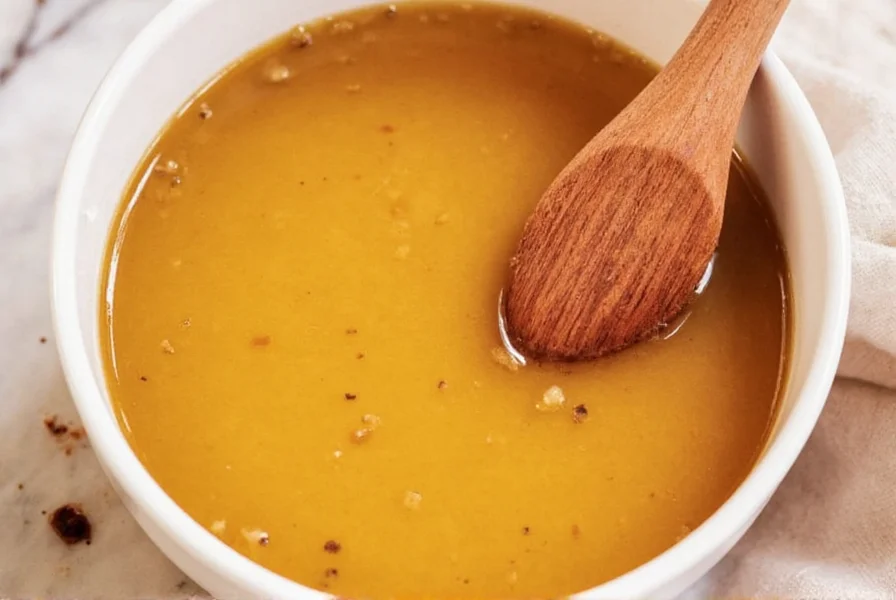Broth and stock are often used interchangeably, but they’re fundamentally different in ingredients, cooking methods, and culinary uses. Broth is made from meat and vegetables, seasoned, and ready to drink. Stock is made from bones, simmered longer for collagen extraction, and typically unseasoned to serve as a versatile base for sauces, soups, and stews. Understanding this difference is crucial for perfecting your cooking.
Broth vs Stock: What’s the Real Difference?
Many home cooks mistakenly believe broth is simply seasoned stock, but the distinction is more nuanced. Broth starts with meat (often already cooked) and vegetables, simmered for 1-2 hours. It’s seasoned and ready to consume as-is. Stock begins with bones (with or without meat), simmered for 6-24 hours to extract collagen and gelatin. It’s usually unsalted to maintain versatility in recipes.
When to Use Broth vs Stock
Choosing between broth and stock depends on your dish:
- Use broth when you want immediate flavor: in light soups, as a drinking broth, or for quick sauces where you don’t need further reduction.
- Use stock for dishes requiring depth and body: in long-simmered stews, braises, gravies, or when you’re making your own sauce from scratch.
Broth vs Stock: A Visual Comparison
| Feature | Broth | Stock |
|---|---|---|
| Main Ingredient | Meat (often cooked) | Bones (with or without meat) |
| Simmer Time | 1–2 hours | 6–24 hours |
| Seasoning | Pre-seasoned | Usually unsalted |
| Mouthfeel | Light and clean | Rich and gelatinous |
| Best For | Drinking, light soups, sauces | Ragouts, stews, braises, sauces |
| Ideal Spices | Herbs, citrus zest | Earth spices, chilies, pepper |
How Spices Affect Broth vs Stock
Spices interact differently with broth and stock due to their composition:
Bones vs Meat: Spice Absorption Differences
Stock’s long simmering extracts collagen and minerals from bones, creating a thicker base that absorbs earthy spices like cumin, paprika, and turmeric. Broth, made from meat and simmered briefly, has a lighter profile that benefits from fresh herbs like thyme, parsley, and dill.
Pro Tip: Layering Spices Correctly
For optimal flavor in either base:
- Add whole spices (star anise, cinnamon sticks) early for background warmth
- Add ground spices (turmeric, cumin) midway for even infusion
- Finish with fresh herbs or citrus zest just before serving for brightness

Frequently Asked Questions
Can I substitute broth for stock in recipes?
Yes, but with considerations. Broth is typically more flavorful and already seasoned, so you may need to reduce added salt when substituting it for stock. Stock has a richer, more gelatinous texture that works better for sauces and reductions. For soups where the liquid is the star, broth often works better, while stock excels in dishes requiring long cooking times like braises.
Which is healthier, broth or stock?
Both have nutritional benefits but differ slightly. Stock contains more collagen and gelatin from simmering bones, which may support joint health. Broth often has more sodium since it’s typically seasoned. Homemade versions of both are generally healthier than store-bought, as you control the ingredients. For the healthiest option, make your own using organic ingredients with minimal salt.
Why does stock gel when cooled but broth doesn’t?
This is due to the collagen extracted from bones during the long simmering process of making stock. As it cools, this collagen turns into gelatin, giving stock its characteristic jelly-like consistency when cold. Broth, made primarily from meat with less connective tissue, contains less collagen and therefore doesn’t gel as noticeably.
How long can I store homemade broth or stock?
Properly cooled homemade broth or stock will keep for 4-5 days in the refrigerator. For longer storage, freeze it in airtight containers or ice cube trays (for portioned use) for up to 6 months. Always leave some headspace in containers as liquid expands when frozen. Label with dates to track freshness.
Should I skim the foam when making stock?
Yes, skimming the foam (called ‘scum’) that rises to the surface during the first 20-30 minutes of simmering results in a clearer, cleaner-tasting stock. This foam contains impurities and coagulated proteins from the bones. Use a fine mesh skimmer for best results. After this initial period, foam production typically decreases significantly.
Conclusion: Mastering Your Cooking Base
Broth and stock serve different culinary purposes. Broth delivers immediate, seasoned flavor for quick dishes, while stock provides a rich, unseasoned foundation for complex recipes. By understanding their differences and using them appropriately, you’ll elevate every soup, stew, and sauce you make.
Remember: When in doubt, choose stock for long-cooked dishes and broth for lighter, quicker preparations. With this knowledge, you’re ready to create restaurant-quality meals at home.










 浙公网安备
33010002000092号
浙公网安备
33010002000092号 浙B2-20120091-4
浙B2-20120091-4